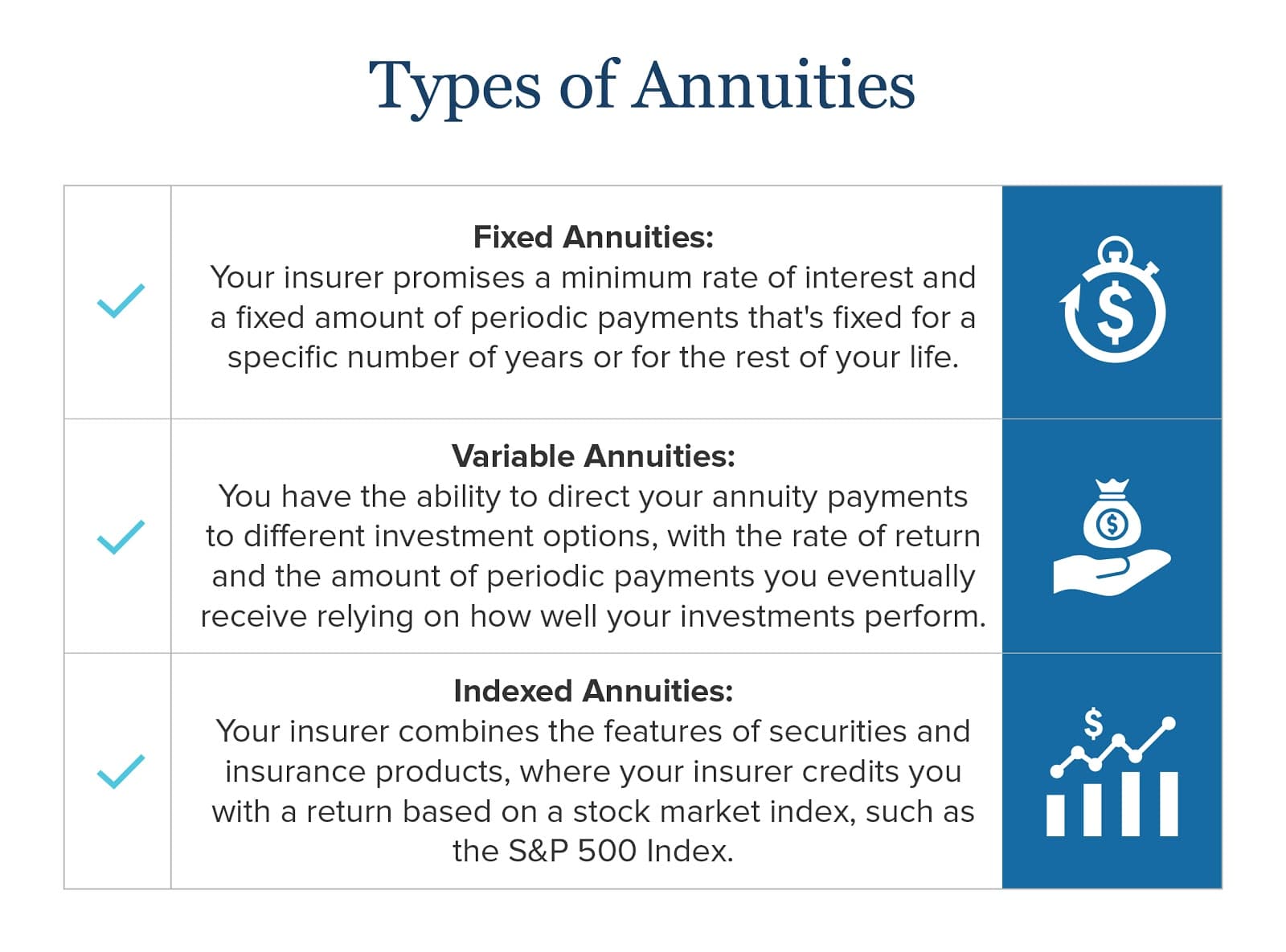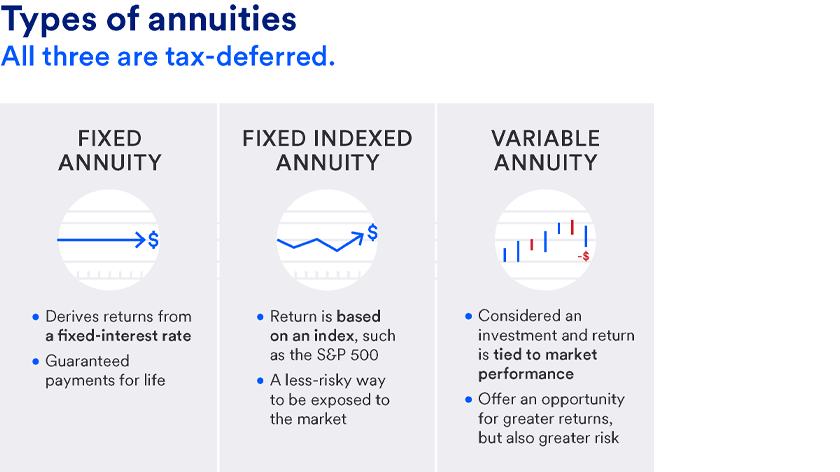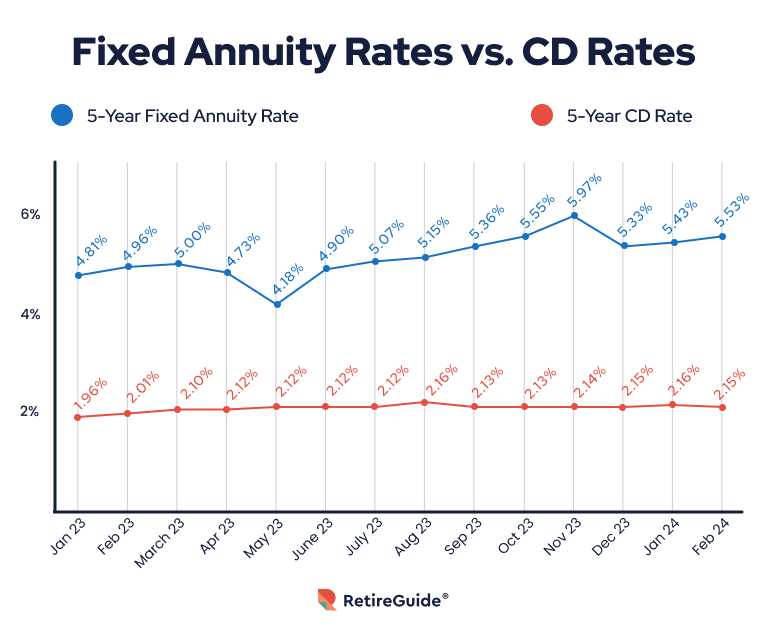All Categories
Featured
Table of Contents
Simply as with a fixed annuity, the proprietor of a variable annuity pays an insurance provider a swelling amount or series of payments for the guarantee of a collection of future settlements in return. As stated above, while a fixed annuity grows at an assured, constant rate, a variable annuity grows at a variable rate that depends upon the efficiency of the underlying investments, called sub-accounts.

Throughout the buildup phase, possessions bought variable annuity sub-accounts expand on a tax-deferred basis and are taxed just when the contract owner withdraws those earnings from the account. After the buildup phase comes the revenue phase. With time, variable annuity properties must in theory raise in value up until the contract proprietor chooses he or she wish to begin withdrawing money from the account.
The most significant concern that variable annuities usually present is high cost. Variable annuities have numerous layers of costs and expenditures that can, in aggregate, develop a drag of up to 3-4% of the contract's worth each year.
Breaking Down Indexed Annuity Vs Fixed Annuity Everything You Need to Know About Financial Strategies Defining What Is Variable Annuity Vs Fixed Annuity Advantages and Disadvantages of Fixed Annuity Or Variable Annuity Why Choosing the Right Financial Strategy Matters for Retirement Planning Fixed Index Annuity Vs Variable Annuities: Explained in Detail Key Differences Between Deferred Annuity Vs Variable Annuity Understanding the Key Features of Long-Term Investments Who Should Consider Strategic Financial Planning? Tips for Choosing Fixed Vs Variable Annuity Pros And Cons FAQs About Indexed Annuity Vs Fixed Annuity Common Mistakes to Avoid When Planning Your Retirement Financial Planning Simplified: Understanding Your Options A Beginner’s Guide to Smart Investment Decisions A Closer Look at How to Build a Retirement Plan
M&E expense fees are computed as a percentage of the contract worth Annuity companies pass on recordkeeping and other administrative costs to the agreement proprietor. This can be in the kind of a flat annual charge or a percentage of the agreement value. Management fees may be included as part of the M&E risk charge or may be examined individually.
These charges can range from 0.1% for easy funds to 1.5% or more for proactively handled funds. Annuity agreements can be customized in a number of methods to serve the specific demands of the agreement owner. Some common variable annuity cyclists consist of ensured minimal accumulation advantage (GMAB), guaranteed minimum withdrawal advantage (GMWB), and guaranteed minimal revenue advantage (GMIB).

Variable annuity payments offer no such tax reduction. Variable annuities often tend to be extremely ineffective lorries for passing riches to the following generation due to the fact that they do not take pleasure in a cost-basis adjustment when the original agreement owner passes away. When the owner of a taxable financial investment account dies, the cost bases of the financial investments kept in the account are gotten used to reflect the marketplace rates of those financial investments at the time of the owner's fatality.
Exploring the Basics of Retirement Options Everything You Need to Know About Annuities Variable Vs Fixed Breaking Down the Basics of Fixed Vs Variable Annuity Pros and Cons of Fixed Annuity Vs Variable Annuity Why Choosing the Right Financial Strategy Is a Smart Choice How to Compare Different Investment Plans: How It Works Key Differences Between Different Financial Strategies Understanding the Risks of Fixed Income Annuity Vs Variable Annuity Who Should Consider Strategic Financial Planning? Tips for Choosing the Best Investment Strategy FAQs About Planning Your Financial Future Common Mistakes to Avoid When Choosing What Is A Variable Annuity Vs A Fixed Annuity Financial Planning Simplified: Understanding Your Options A Beginner’s Guide to Fixed Income Annuity Vs Variable Annuity A Closer Look at Annuities Variable Vs Fixed
As a result, successors can inherit a taxable investment profile with a "clean slate" from a tax point of view. Such is not the situation with variable annuities. Investments held within a variable annuity do not receive a cost-basis adjustment when the original owner of the annuity passes away. This indicates that any kind of gathered latent gains will certainly be passed on to the annuity owner's successors, together with the associated tax obligation worry.
One significant concern associated to variable annuities is the possibility for conflicts of rate of interest that may exist on the component of annuity salesmen. Unlike an economic consultant, that has a fiduciary responsibility to make financial investment decisions that profit the client, an insurance coverage broker has no such fiduciary commitment. Annuity sales are very rewarding for the insurance coverage professionals who market them as a result of high in advance sales compensations.

Many variable annuity contracts contain language which positions a cap on the percentage of gain that can be experienced by specific sub-accounts. These caps protect against the annuity owner from fully participating in a part of gains that can otherwise be enjoyed in years in which markets create substantial returns. From an outsider's viewpoint, it would certainly seem that financiers are trading a cap on investment returns for the abovementioned guaranteed floor on financial investment returns.
As kept in mind over, surrender charges can badly limit an annuity owner's ability to relocate possessions out of an annuity in the very early years of the agreement. Further, while the majority of variable annuities enable agreement proprietors to withdraw a specified quantity throughout the accumulation phase, withdrawals beyond this quantity typically cause a company-imposed fee.
Withdrawals made from a fixed rate of interest investment choice can also experience a "market value change" or MVA. An MVA changes the worth of the withdrawal to show any type of changes in rate of interest from the time that the cash was invested in the fixed-rate alternative to the time that it was taken out.

On a regular basis, even the salesmen who market them do not totally recognize just how they work, and so salesmen sometimes victimize a purchaser's emotions to market variable annuities rather than the values and viability of the items themselves. Our company believe that financiers ought to completely understand what they own and just how much they are paying to own it.
Highlighting the Key Features of Long-Term Investments A Closer Look at Immediate Fixed Annuity Vs Variable Annuity Breaking Down the Basics of Annuities Fixed Vs Variable Advantages and Disadvantages of Different Retirement Plans Why Choosing the Right Financial Strategy Is Worth Considering Fixed Vs Variable Annuity: Simplified Key Differences Between Fixed Income Annuity Vs Variable Annuity Understanding the Risks of Long-Term Investments Who Should Consider Strategic Financial Planning? Tips for Choosing Fixed Index Annuity Vs Variable Annuities FAQs About Fixed Interest Annuity Vs Variable Investment Annuity Common Mistakes to Avoid When Choosing What Is A Variable Annuity Vs A Fixed Annuity Financial Planning Simplified: Understanding Fixed Vs Variable Annuity Pros And Cons A Beginner’s Guide to Fixed Indexed Annuity Vs Market-variable Annuity A Closer Look at Variable Vs Fixed Annuities
Nevertheless, the exact same can not be claimed for variable annuity properties kept in fixed-rate financial investments. These assets legally come from the insurance provider and would certainly as a result be at danger if the business were to fail. In a similar way, any assurances that the insurance provider has agreed to supply, such as an ensured minimal revenue advantage, would remain in concern in case of a business failure.
Potential buyers of variable annuities should comprehend and consider the financial problem of the releasing insurance policy firm before entering into an annuity contract. While the advantages and downsides of numerous types of annuities can be disputed, the actual problem surrounding annuities is that of viability.
As the claiming goes: "Customer beware!" This post is prepared by Pekin Hardy Strauss, Inc. Annuities for conservative investors. ("Pekin Hardy," dba Pekin Hardy Strauss Riches Administration) for informative functions just and is not planned as an offer or solicitation for service. The details and data in this short article does not comprise lawful, tax obligation, accounting, financial investment, or various other professional guidance
Table of Contents
Latest Posts
Exploring Deferred Annuity Vs Variable Annuity A Closer Look at How Retirement Planning Works What Is Fixed Vs Variable Annuity Pros And Cons? Advantages and Disadvantages of Fixed Vs Variable Annuity
Annuities Comparison Chart
Analyzing Strategic Retirement Planning A Closer Look at How Retirement Planning Works Breaking Down the Basics of Investment Plans Features of Fixed Vs Variable Annuity Pros Cons Why Choosing the Rig
More